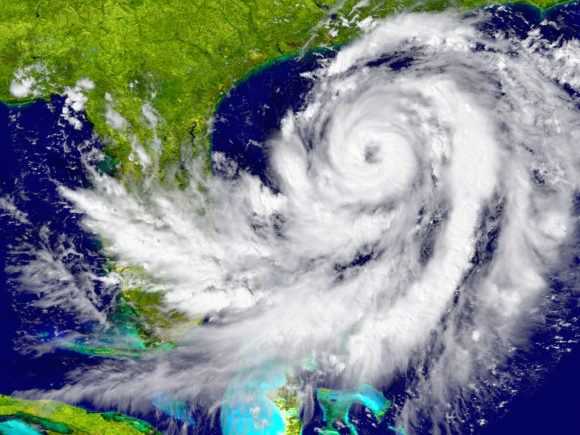This article is part of a sponsored series by Academy Journal.
For the first time in several years, I didn’t get tense because June 1 was coming. In fact, I totally missed June 1 until June 2. I totally forgot about June 1. Oh, right. You may not be thinking about June 1, like I usually think about June 1. June 1 marks the official beginning of the Atlantic hurricane season. That means the for the next six months, the 28,673 statute miles of the Atlantic coast and the 17,141 statutes mile of the Gulf (of Mexico) coast (source, NOAA) are watching the weather for signs of wind and rain.
I hear you. You think that this doesn’t apply to you. Hang in for a few more words and I think you’ll find something worth your time here. Let’s cut to the chase. As insurance people, we need to pay attention to some policy language that is important here.
First, what is a hurricane? As you might guess, a hurricane is a storm that is called a hurricane by the National Hurricane Center (NHC) at the National Oceanic and Atmospheric Administration (NOAA). You can find current and forecast tropic storm activity HERE. They use the Saffir-Simpson rating scale to determine what sort of storm we are dealing with. You can find more information about the Saffir-Simpson scale HERE.
In an insurance policy, hurricane is more than that. A hurricane is occurring from the time that the first hurricane watch or warning is issued in an area until 72 hours after the last watch or warning has passed. Why is this time frame important? Wind related damage to a building can be attributed to the hurricane before the big green blob on the radar makes it to town and after it has passed over. Remember that high winds and hail can precede and follow the main body of the hurricane. This leads us to the next issue; deductibles.
If you’ve been involved in insurance for more than a few days, you understand a deductible and why we have them. Let’s focus on the one deductible that is really important during hurricane season; the hurricane deductible. According to III, nineteen states and DC have hurricane deductibles. Which states? The states that comprise the 45,814 statute miles of shoreline of the Atlantic and Gulf coasts. Most deductibles are fixed dollar amounts ($500, $2,500, $10,000). However, a hurricane deductible is most often a percentage deductible. This is the first place you have to watch.
Many residential policies have a hurricane deductible of 1%, 2%, 5%, or 10%. There can be higher, but these are common. What does that mean? If you’re insuring a home with a stated policy limit of $250,000, 10% of that is $25,000. That’s a lot of money for the insured to absorb. Consider now that some commercial property policies provide that the hurricane deductible will apply separately for buildings and contents. If there is significant damage to that commercial building, they may be retaining 10% for their building and another 10% for their business personal property within the building. Watch that. That’s something that they need to be aware of.
You may remember, or you may not, that in 2004 and 2005, there are more than one hurricane that made landfall in some areas. In 2004, Florida felt the impact of four hurricanes within 44 days. Consider that you are a homeowner, or business owner with a building, and three of those hurricanes damage your building. What happens? You guessed it. Multiple hurricanes means multiple hurricane deductibles. Remember our $250,000 house with a 10% hurricane deductible? Three claims means the possibility of three deductibles. That’s $75,000 out of pocket for hurricane damage. Can you imagine trying to adjust and pay those claims? Can you imagine that phone call?
“Hi, Mrs. Insured. We have completed our investigation of your hurricane claims and we have found that your losses are within your hurricane deductibles so we will be closing our file without payment. What is your deductible? Well, since there were three storms and you have a $25,000 deductible per occurrence, it’s $75,000. Lawyer? Yes, we will expect his call…”
That’s why in some states, the law provides that only one hurricane deductible can apply during a hurricane season. That large deductible only applies one time during a calendar year, after that, the fire deductible applies. By the way, that rule may only apply for certain risks, like residential policies. Watch that, too.
Making sure that the insured understands how their property policies will handle the possibility of a hurricane or other storm is an important part of advising them on their insurance and risk management needs.
Was this article valuable?
Here are more articles you may enjoy.




 Disney Worker Injured Trying to Stop Runaway Boulder at Indiana Jones Show
Disney Worker Injured Trying to Stop Runaway Boulder at Indiana Jones Show  Kansas Man Sentenced to Probation for Insurance Fraud
Kansas Man Sentenced to Probation for Insurance Fraud  Is the AI Boom a Bubble Waiting to Pop? Here’s What History Says
Is the AI Boom a Bubble Waiting to Pop? Here’s What History Says  Howden US Tells Judge Brown & Brown Employees Fled Due to ‘Mistreatment’
Howden US Tells Judge Brown & Brown Employees Fled Due to ‘Mistreatment’ 


